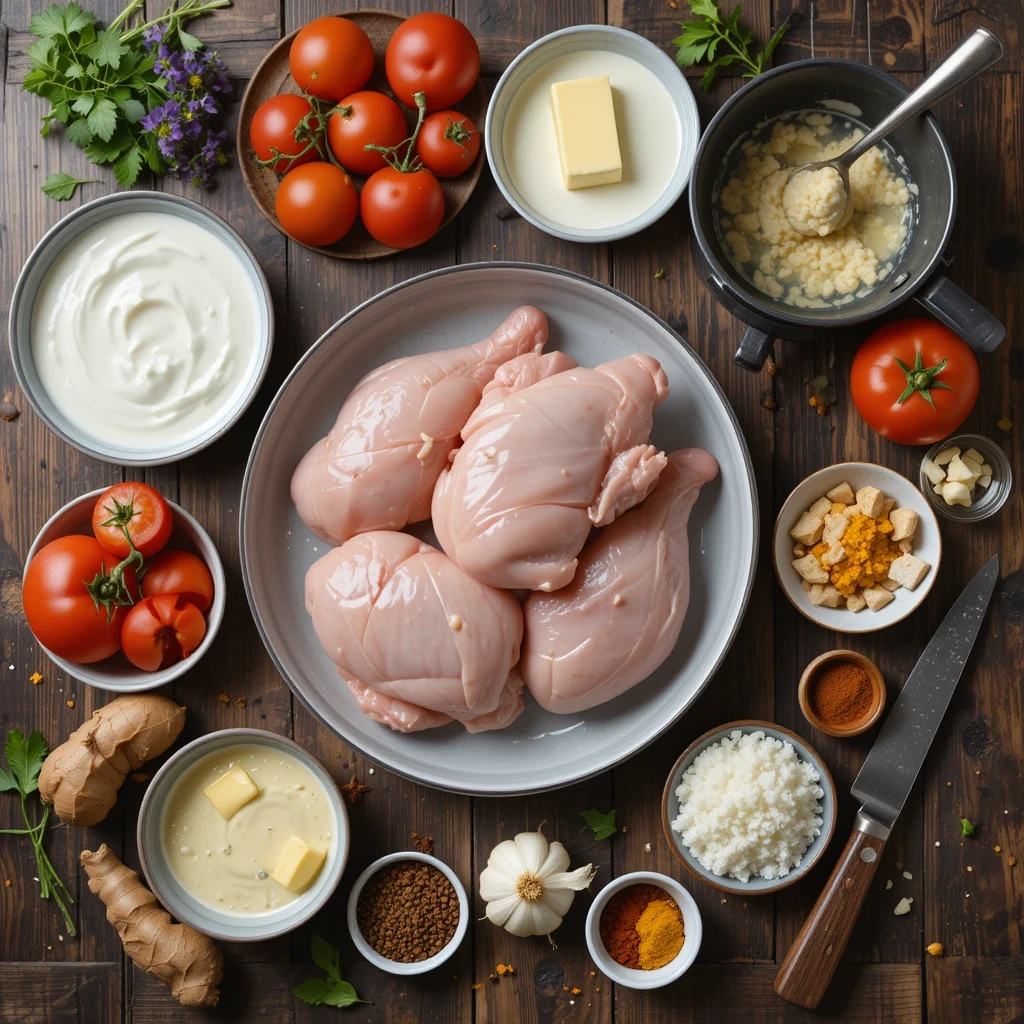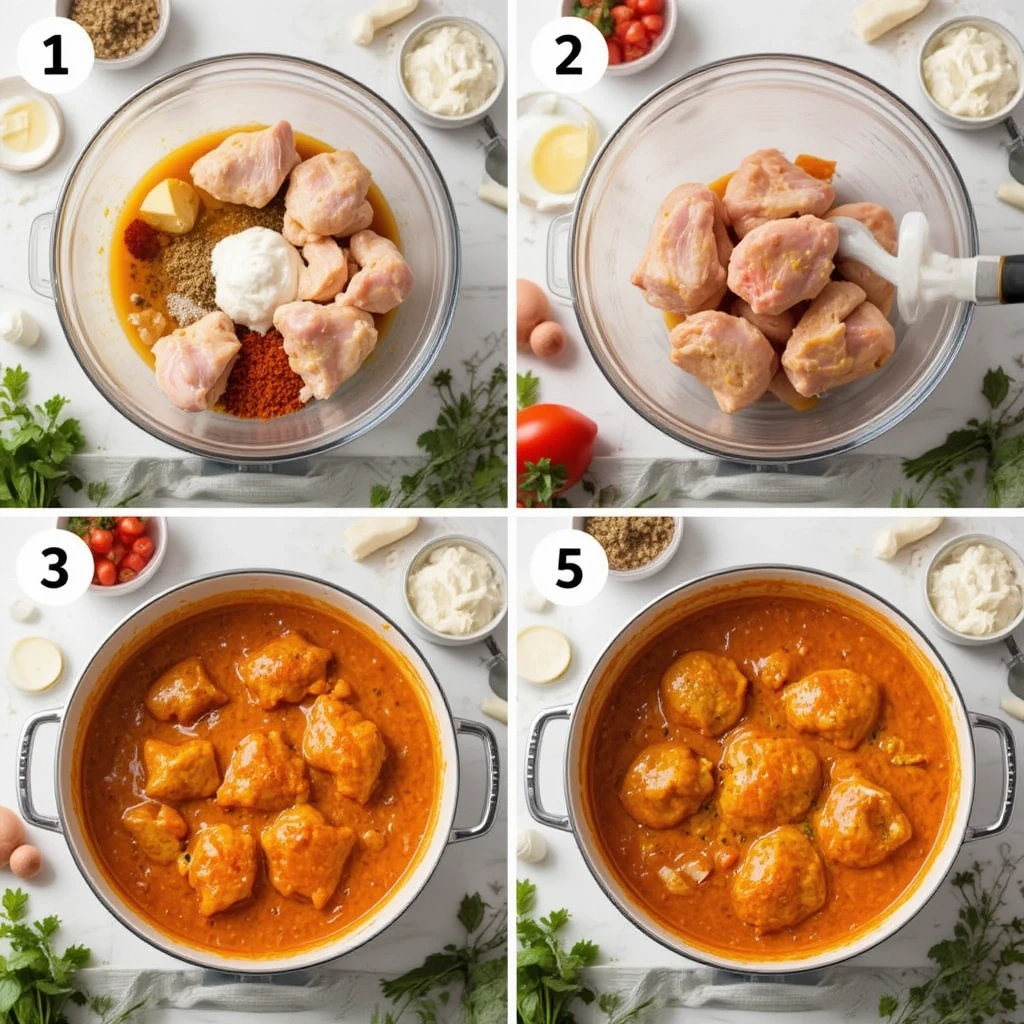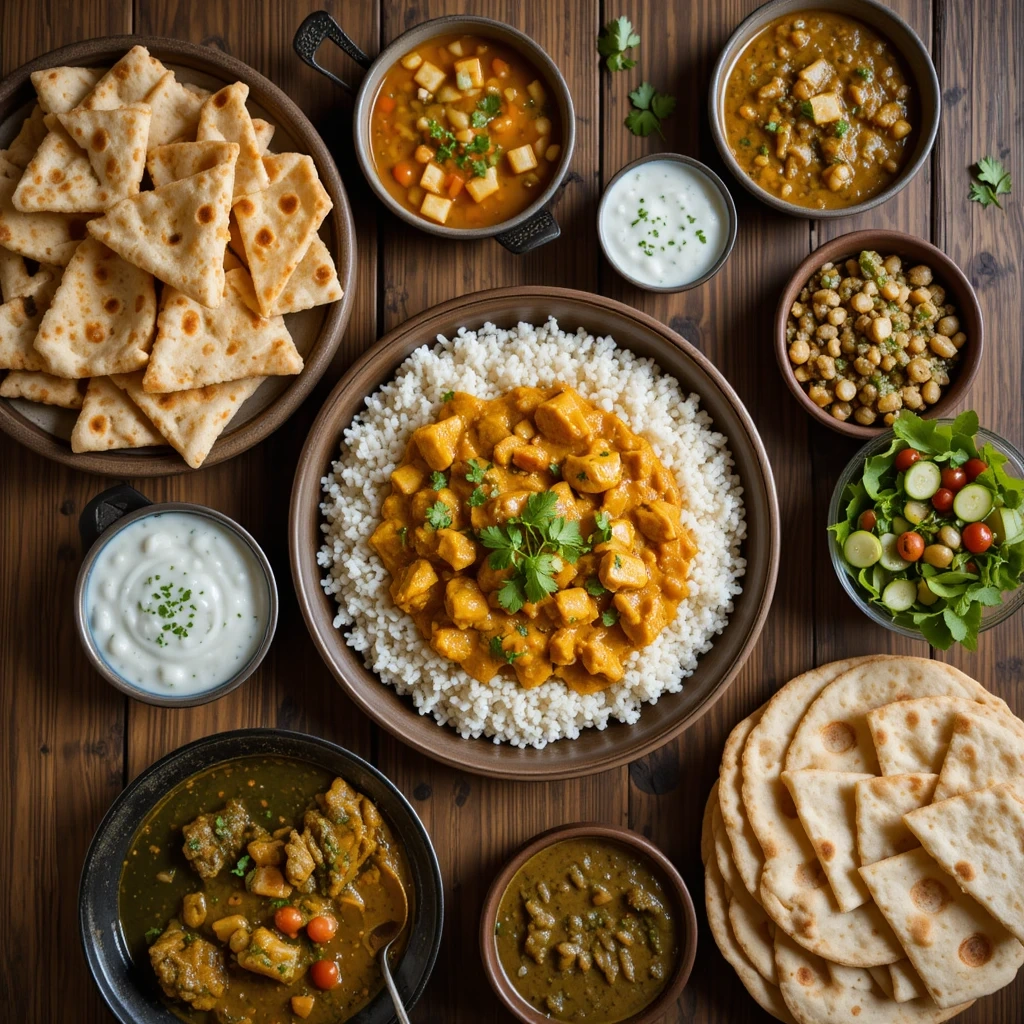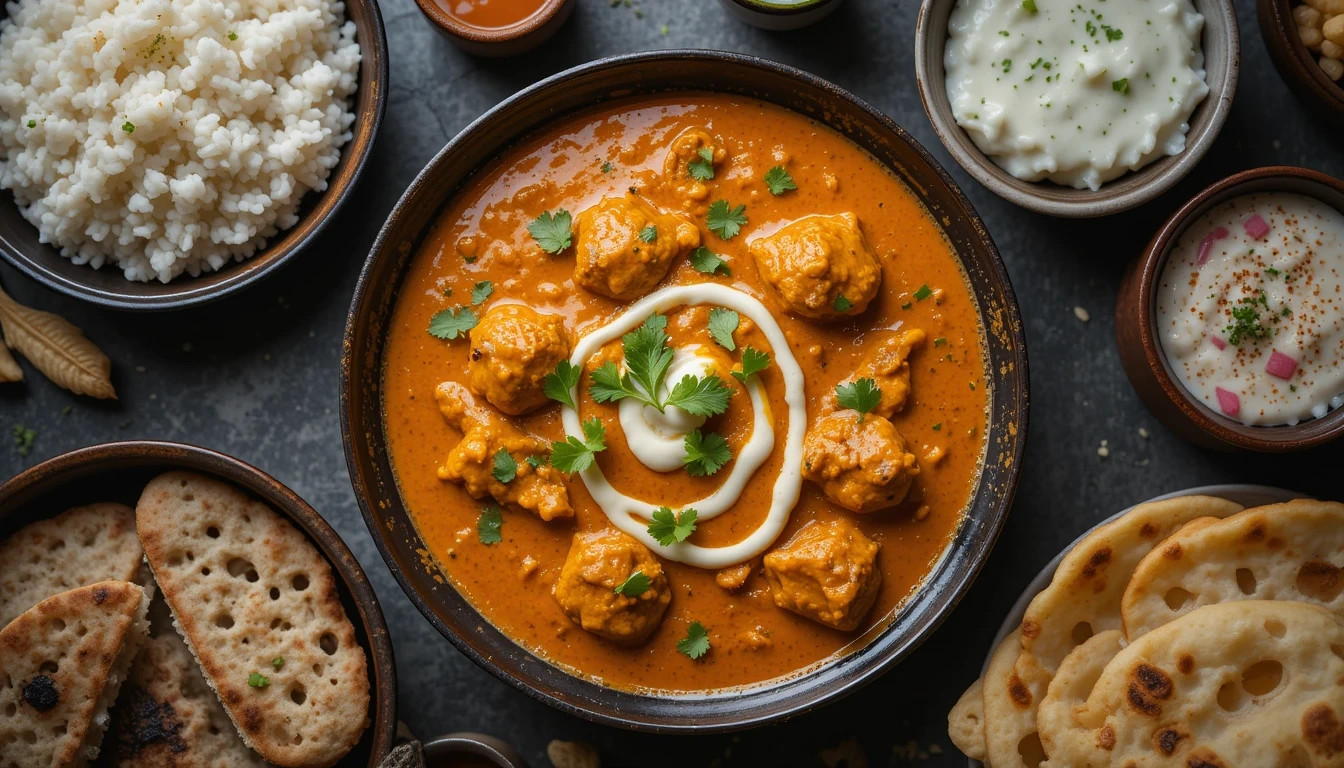Butter chicken, also known as murgh makhani, is a popular Indian dish with a rich history. It is thought to have started in Delhi, India, during the 1950s.famous restaurant Moti Mahal. The dish was created by the restaurant’s founders, Kundan Lal Gujral and Thakur Dass, who were looking for ways to use leftover tandoori chicken.
They decided to simmer the leftover chicken in a rich, creamy tomato sauce, resulting in the creation of butter chicken. This dish quickly gained popularity and has since become a staple in Indian cuisine, as well as a beloved dish around the world. The modern-day version of butter chicken has evolved to include various regional and international influences, with different chefs and home cooks adding their own unique twists to the classic recipe.
While the basic elements of tender chicken in a creamy, flavorful sauce remain consistent, there are now countless variations and adaptations of butter chicken that cater to different tastes and dietary preferences.
Table of Contents
Ingredients and Tools You’ll Need to Make the Perfect Butter Chicken
To make the perfect butter chicken, you will need a variety of ingredients and tools. The key components include boneless chicken, yogurt, cream, tomatoes, onions, garlic, ginger, and a blend of aromatic spices such as garam masala, cumin, coriander, and turmeric. Additionally, butter or ghee is essential for achieving the rich and velvety texture that is characteristic of this dish.
In terms of tools, a heavy-bottomed pan or skillet is ideal for cooking the chicken and simmering the sauce. A blender or food processor will be necessary for creating a smooth tomato base, and a mortar and pestle can be used to grind whole spices for maximum flavor. It’s also helpful to have a sharp knife for cutting the chicken and vegetables, as well as a wooden spoon for stirring the sauce as it cooks.

Step-by-Step Instructions for Preparing and Cooking Butter Chicken
To prepare butter chicken, start by marinating the chicken pieces in a mixture of yogurt, ginger, garlic, and spices for at least 30 minutes to allow the flavors to infuse. While the chicken marinates, prepare the tomato base by blending together fresh tomatoes, onions, garlic, and ginger until smooth. Next, heat a pan over medium-high heat and add butter or ghee.
Once hot, add the marinated chicken pieces and cook until they are golden brown on all sides. RRemove the chicken from the pan and place it to one side.. In the same pan, add more butter or ghee along with the blended tomato mixture.
Cook this mixture until it thickens and the raw aroma dissipates. Then, add cream and simmer the sauce until it reaches a rich and velvety consistency. Finally, return the cooked chicken to the pan and let it simmer in the Cook the sauce briefly to let the flavors combine.
Looking to try something bold and delicious for dinner? Check out this flavorful guide to cooking goat meat on Veibrant Recipes! Whether you’re new to goat or already love it, you’ll find tips, tasty ideas, and recipes that bring out the best in this tender, protein-packed meat. From stews to grills, it’s all about rich flavor and simple steps. Dive into something different tonight!
Discover the delicious world of goat meat recipes

Tips and Tricks for Achieving the Perfect Flavor and Texture
Technique Impact on Flavor/Texture
Marinating Enhances flavor and tenderizes meat
Brining Increases juiciness and flavor of meat
Seasoning Adds depth of flavor
Slow cooking Tenderizes tough cuts of meat
Resting meat Allows juices to redistribute for better texture
To achieve the perfect flavor and texture in butter chicken, it’s important to pay attention to several key factors. First, marinating the chicken in yogurt and spices not only adds flavor but also helps tenderize the meat, resulting in juicy and flavorful chicken pieces. Additionally, using high-quality spices and fresh ingredients can make a significant difference in the overall taste of the dish.
Toasting whole spices before grinding them can enhance their aromatic qualities, while using ripe, juicy tomatoes will contribute to a vibrant and flavorful sauce. Furthermore, controlling the heat during cooking is crucial for achieving the desired texture. Cooking the tomato base until it thickens and the cream until it reduces will result in a luscious and creamy sauce that coats the chicken beautifully.
Variations and Adaptations: How to Customize Butter Chicken to Your Taste
Butter chicken lends itself well to customization, allowing for a wide range of variations and adaptations to suit different preferences. For those looking to add a spicy kick to the dish, incorporating chopped green chilies or a dash of cayenne pepper can elevate the heat level. For a healthier twist on traditional butter chicken, using Greek yogurt instead of cream can reduce the dish’s overall fat content while still providing a creamy texture.
Additionally, substituting tofu or paneer for chicken can create a vegetarian version of this classic dish that is equally delicious. Experimenting with different spice blends or adding unique ingredients such as fenugreek leaves or cashew paste can also result in exciting flavor profiles that cater to individual tastes.
If you’re craving rich, flavorful comfort food with a touch of spice, this Easy Indian Butter Chicken recipe is a must-try. It’s a simplified version of the classic Indian dish, featuring tender chicken simmered in a creamy tomato-based sauce with aromatic spices like garam masala, ginger, and garlic. Whether you’re new to Indian cooking or just want a quick, crowd-pleasing dinner, this dish delivers big flavor with minimal effort. Serve it over rice or with warm naan bread for a complete meal.

Serving Suggestions: What to Pair with Butter Chicken for a Delicious Meal
Classic Pairings
A traditional choice is to serve butter chicken with fragrant basmati rice or naan bread, which helps to soak up the luscious sauce. This classic combination is a staple of Indian cuisine for a reason.
Refreshing Contrasts
For a lighter take on the dish, consider serving butter chicken with a side of cChilled cucumber raita or a fresh green salad.These refreshing accompaniments provide a delightful contrast to the creamy richness of the butter chicken.
A Complete Indian Meal Experience
To create a truly authentic Indian meal, consider serving butter chicken alongside other traditional dishes such as dal (lentil curry), saag paneer (spinach and cheese curry), or aloo gobi (potato and cauliflower curry). This diverse array of flavors and textures will come together to create a satisfying and well-rounded meal.
How to Store and Reheat Butter Chicken for Leftovers
If you have leftover butter chicken, it can be stored in an airtight container in the refrigerator for up to 3-4 days. When reheating, gently warm the dish on the stovetop over low heat to prevent the cream from separating or curdling. Adding a splash of water or extra cream while reheating can help restore the sauce’s original consistency.
For longer-term storage, butter chicken can be frozen for up to 2-3 months. To freeze, portion out individual servings in freezer-safe containers or bags, making sure to leave some room for expansion. When ready to enjoy, thaw the frozen butter chicken in the refrigerator overnight before reheating as usual.
5 Common Mistakes to Avoid and Their Solutions
- Overcooking the Chicken: Overcooking can result in dry and tough chicken pieces. To avoid this, cook the chicken just until it is golden brown on all sides prior to taking it out of the pan.
It will continue cooking as it simmers in the sauce. 2. Using Insufficient Butter or Ghee: Butter or ghee is essential for achieving the rich and velvety texture of butter chicken.
Using too little fat can result in a thin or watery sauce. Be generous with the butter or ghee for optimal results. 3.
Skipping the Marination Step: Marinating the chicken is crucial for infusing it with flavor and ensuring tenderness. Skipping this step can lead to bland-tasting chicken. Give the chicken sufficient time to marinate before you start cooking.
- Not Adjusting Seasoning: Taste the sauce before adding the cooked chicken back in and adjust seasoning as needed. This guarantees that the dish is seasoned to perfection before being served.
- Rushing the Cooking Process: Butter chicken benefits from slow cooking to allow the flavors to develop fully. Rushing through the cooking process can result in underdeveloped flavors and textures.
Patience is key when preparing this dish. In conclusion, mastering the art of making butter chicken involves understanding its history, selecting quality ingredients and tools, following step-by-step instructions with attention to detail, incorporating tips and tricks for optimal flavor and texture, exploring variations and adaptations, considering serving suggestions, learning how to store and reheat leftovers effectively, as well as avoiding common mistakes. With dedication and practice, anyone can create a perfect batch of butter chicken that delights both themselves and their guests.
FAQs
What is the history of butter chicken?
Butter chicken, also known as murgh makhani, is said to have originated in Delhi, India in the 1950s. It was created by the founders of the famous restaurant, Moti Mahal, by combiningremaining tandoori chicken served with a creamy, buttery tomato sauce.
What ingredients and tools do I need to make butter chicken?
To make butter chicken, you will need ingredients such as chicken, yogurt, spices (such as garam masala and turmeric), tomatoes, butter, and cream. You will also need tools such as a blender, a large skillet or pot, and a stove or oven for cooking.
What are the step-by-step instructions for preparing and cooking butter chicken?
The step-by-step instructions for preparing and cooking butter chicken typically involve marinating the chicken, making the tomato-based sauce, cooking the chicken in the sauce, and finishing with cream and butter. The full details can be found in the article.
What are some tips and tricks for achieving the perfect flavor and texture in butter chicken?
Some tips and tricks for achieving the perfect flavor and texture in butter chicken include marinating the chicken for a longer period of time, using high-quality spices, and adjusting the amount of cream and butter to your preference.
How can I customize butter chicken to my taste?
You can customize butter chicken to your taste by adjusting the level of spiciness, adding extra ingredients such as vegetables or paneer, or experimenting with different garnishes and toppings.
How can butter chicken be served for the best experience?
Butter chicken is often served with naan, rice, or roti. It can also be paired with a side of vegetables, salad, or raita for a complete and delicious meal.
How do I store and reheat butter chicken for leftovers?
Leftover butter chicken should be kept in an airtight container in the fridge for up to 3-4 days. For reheating, place it in a microwave-safe dish and heat until hot, or use a pot on the stove to warm it.
What are 5 common mistakes to avoid when making butter chicken and their solutions?
Some common mistakes to avoid when making butter chicken include overcooking the chicken, using low-quality spices, not marinating the chicken long enough, and not adjusting the seasoning to taste. Solutions to these mistakes include using a meat thermometer to ensure the chicken is cooked through, using fresh and high-quality spices, marinating the chicken for at least 2 hours, and tasting and adjusting the seasoning as needed.

butter chicken
Ingredients
- Boneless chicken
- Yogurt
- Cream
- Tomatoes
- Onions
- Garlic
- Ginger
- Garam masala
- Cumin
- Coriander
- Turmeric
- Butter or ghee
- Pros:
- Authentic and flavorful Indian dish.
- Customizable to different spice preferences.
- Can be made with readily available ingredients.
- Freezable for convenient meal prepping.
- Pairs well with a variety of sides.
- Cons:
- Relatively high in fat due to butter and cream.
- Requires some time for marinating.
- Can be challenging to achieve perfect balance of flavors.
- Overcooking chicken can lead to dryness.
Instructions
- Marinate chicken in yogurt, ginger, garlic, and spices for at least 30 minutes.
- Blend tomatoes, onions, garlic, and ginger into a smooth base.
- Heat butter or ghee in a heavy-bottomed pan.
- Cook marinated chicken until golden brown on all sides. Remove from pan and set aside.
- Add more butter/ghee to the pan, then add the blended tomato mixture. Cook until thickened.
- Add cream and simmer until sauce reaches a velvety consistency.
- Return the cooked chicken to the pan and simmer briefly to combine flavors.
- Garnish with cilantro (optional) and serve hot with rice or naan.

